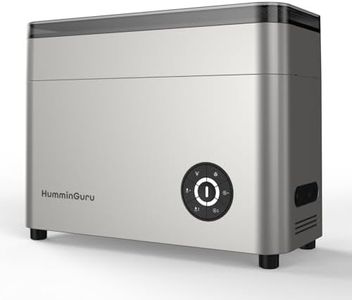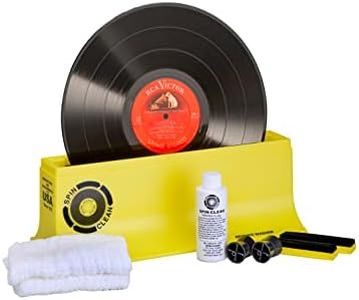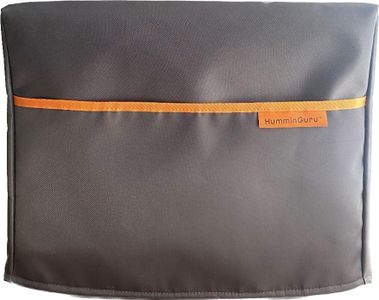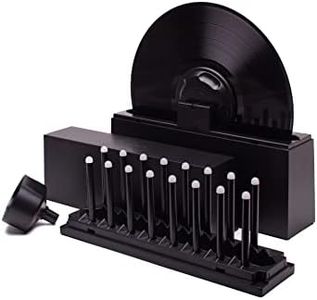We Use CookiesWe use cookies to enhance the security, performance,
functionality and for analytical and promotional activities. By continuing to browse this site you
are agreeing to our privacy policy
4 Best Record Cleaning Machines
From leading brands and best sellers available on the web.Buying Guide for the Best Record Cleaning Machines
Choosing a record-cleaning machine is essential for anyone who wants to maintain their vinyl collection in top shape. Clean records sound better, last longer, and are more enjoyable to listen to. There are a variety of machines on the market, each with different features and cleaning methods. When considering which model is right for you, it's important to focus on your collection's size, how often you play records, and how much effort you want to put into cleaning. Understanding the key specifications will help you make an informed decision and pick a machine that matches your needs.Cleaning MethodThe cleaning method refers to how the machine removes dust, dirt, and grime from your records. Common methods include manual brushing, vacuum suction, ultrasonic cleaning, and cleaning fluids combined with rollers or pads. Manual machines require you to physically operate them and may take more time per record, whereas vacuum and ultrasonic machines usually automate much of the process and provide deep cleaning. For light cleaning of already well-maintained records, manual methods can be sufficient. For collectors or those with very dirty or used records, ultrasonic or vacuum machines can provide a much more thorough result.
Automation LevelAutomation level is about how much the machine does for you versus how much you have to do manually. Some machines require you to rotate the record by hand and manage the cleaning process, while others automate spinning, cleaning, and drying, so you just load the record and start the process. If you want convenience and have a large number of records to clean, a more automated machine will save you significant time and effort. If you only need to clean a few records occasionally, a semi-automatic or manual model could be just right.
Drying SystemThe drying system determines how your vinyl dries after it has been cleaned. Some machines use fans or vacuum suction to quickly dry the record, which can be very convenient and prevent dust from resettling. Others may rely on air-drying, where you need to let the record sit until it is dry. Fast, built-in drying is ideal for frequent users or those in dusty environments, while air-drying is reasonable if you clean records infrequently and can wait a bit before storing them again.
Fluid Use and Waste DisposalThis spec covers if and how the machine uses cleaning solutions and what happens to the waste liquid. Some machines have a tank or tray to collect used fluid, while others let the fluid drip out or require you to empty it after each use. Efficient fluid handling is important for keeping the cleaning area tidy and making the process hassle-free. People cleaning a lot of records or wanting an easy cleanup process will appreciate machines with built-in waste management.
Record CompatibilityRecord compatibility means which sizes and types of records the machine can clean, such as 7-inch singles, 10-inch EPs, or 12-inch LPs. Some machines only work with standard 12-inch records, while others include adapters or features to handle different sizes. If your collection includes various record types, you'll want a machine that easily adapts to each size. If you only own standard 12-inch LPs, you can focus on machines optimized for those.
Noise LevelNoise level describes how loud the machine is while it's running, which can matter if you’re cleaning records in a shared space or late at night. Machines with vacuum motors are typically louder, while manual and some ultrasonic machines operate more quietly. If you live with others or are sensitive to noise, consider a machine known for quiet operation. If you’re cleaning in a garage or dedicated room, noise may not be as important.





